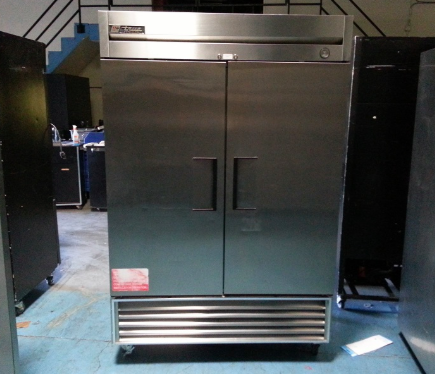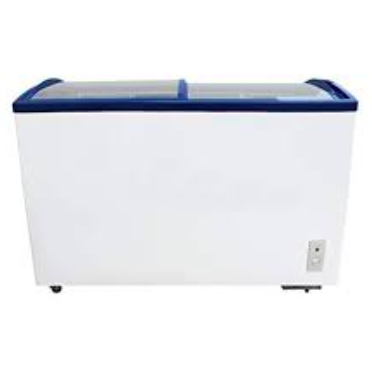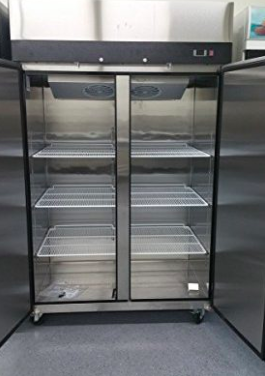Whether you’re setting up a full-scale restaurant kitchen, outfitting a food truck, or just trying to extend your long-term food storage into the basement of your own house, finding a used commercial freezer is going to be a big part of your equipment purchasing plans. Whereas a refrigerator (or group of refrigerators) may be useful for storing fresh produce, prepped food, or backups of prepped ingredients, a used commercial freezer is vital for longer-term storage of uncooked meat and fish, big batches of soups or sauces, cook-and-serve products like French fries or frozen appetizers, and bulk quantities of frozen vegetables. Buying full cases of product helps your business save money, preserve cooked food, and stretch your purchasing dollars further.
If you’re in the market for a used commercial freezer, check out our active listings below. Each of these commercial freezers is listed for sale by owner. We don’t take any commissions or listing fees so you get the best deal possible on used restaurant equipment.
[display_listings l_type=”87″]
When it comes to selecting a freezer that’s perfect for your space, the options are seemingly limitless. From full-sized standing freezers, to consumer-level freezers repurposed for commercial use, to full-sized walk-in units, there’s a used freezer option to fit nearly any space or budget constraint. We’ll be examining some of these different types of freezers in additional posts, but for now, let’s spend some time focusing on the middle-of-the-road, when it comes to commercial freezers: The standing reach-in freezer.
Most commercial reach-in freezers feature either a single door, or two large side-by-side doors for maximum usability. Finding a unit that’s easy to keep organized, easy to clean, won’t chew up valuable real estate, and most importantly, reliably keeps food frozen through dozens of cycles of opening and closing the door is important.
How Do You Use Commercial Freezers?

Commercial kitchens are like unique snowflakes: Every one is set up a little bit differently. But here’s a common layout: If your restaurant has one, the large walk-in freezers may contain unprepared ingredients, including large cases of meat or large cuts that can’t fit anywhere else. Smaller reach-in freezers may contain ingredients that are used more often, including frozen pastries, side dishes, or vegetables. There may also be a dedicated “prep freezer” for long-term storage of finished sauces, or odds and ends that don’t fit anywhere else (like that half-case of raw chicken thighs that have been in there since the beginning of time itself).
When possible, organize your day around trips to the freezer, so that things that need to be thawed before cooking are pulled early in the day, or the night before they’re going to be prepped. This sort of planning ahead ensures that your food will be ready when you are, and you avoid the dreaded “We’re supposed to have prime rib on special tonight, and it’s frozen harder than the surface of Pluto” scenario. Place your freezer in a location that’s out of the way, but still easily accessible. Consider the ambient temperature in the room, as well; if the freezer is placed in the hottest part of your kitchen, it will have to work harder to keep food frozen, and opening and closing the door frequently will contribute to ice and frost buildup and potential thermostat problems.
How to Evaluate a Used Commercial Freezer

You’re probably purchasing a used commercial freezer as a means of trying to prevent waste and stretch your purchasing power a little bit further, which means you should evaluate any potential purpose carefully. After all, waking up in the morning to a freezer that’s sitting at 60 degrees and full of soaking wet, warm food can cost your business, big time. That’s why when looking at a commercial freezer for the first time, the most important question is: Does the unit consistently hold temperatures of zero degrees or below?
Check the seals around the door (or doors) of the unit, looking for any missing chunks or tears that will affect the performance of the freezer. You should also look for large dents on the outside of the unit, which won’t affect the performance of the freezer, but may help give you a sense of how well (or badly!) it was treated in a commercial environment. If the unit has lights (many freezers do not), make sure they are all in good working order, and make sure that the power supply matches your kitchen’s electrical setup.
Check for a buildup of dust, grime, and debris in the air vents, and listen closely to the sound of the compressor. Any clanging or strange sounds (like trying to run an immersion blender through a stock pot full of Matchbox cars) could indicate an issue with the fan or fan housing, which could spell trouble down the road. A four-inch-thick layer of frost or ice is generally a bad sign; it could indicate an issue with the unit’s thermostat, compressor, or defrost cycles.
Sometimes, you’ll find a listing for a used commercial freezer that seems too good to be true; a six-foot double-door reach-in freezer shouldn’t cost $150, and if it does, examine the fine print carefully. Sometimes, these units are sold with a major known mechanical problem, like a broken compressor, faulty thermostat, or broken lines. While this may be a tempting way to get yourself an expensive freezer for a fraction of the price, remember that replacing these components can cost hundreds (or even thousands) of dollars.
Think about how much freezer you actually need. If you’re storing a few cases of frozen french fries or a few racks of pre-made pizza dough, you probably don’t need to spring for the 800 square foot walk-in freezer that chills to -40 degrees. Look for units with as many internal organization possibilities as you can; units with lots of options for shelving will help keep your freezer clean, tidy, and easy to use, with less possibility that you’ll “forget” about a bag of frozen shrimp that’s been buried in the back since 1996. Remember that the colder your freezer gets, the longer you’ll be able to hold frozen food, and cool food to frozen more quickly. Also, consider the power consumption requirements of your new freezer; commercial freezers cost money to run, so make sure you don’t buy more than you need and waste all of that cooling space.
While it’s always nice to buy an inspection-ready, sparkling clean unit, don’t be distracted by mold, grime, or mysterious spilled, sticky messes. Everything on a commercial freezer can be cleaned, and we’ve seen some truly disgusting pieces of equipment restored to a sparkling shine. If the unit is particularly dirty, try using that as a negotiating point for a better price.
How to Use a Commercial Freezer

Take a hard look at your kitchen’s layout, and try to envision your route through the space each day. With some planning, you’ll probably only need to access your new freezer only occasionally, which means that it doesn’t need to be placed smack in the middle of all the action. Don’t forget to consider which way the door opens, the proximity to other pieces of (potentially hot) equipment, and your building or food truck’s existing electrical layout.
Most modern, higher-end commercial freezers include a digital temperature readout, but if not, hang an inexpensive thermometer inside to ensure your new commercial freezer is maintaining a consistent temperature, to prevent food safety issues, spoilage, and waste.
Make friends with a commercial refrigeration specialist. Do this now. Yes, before you even think you need one. At some point, your commercial freezer is going to have problems, and you’re going to want to have someone you can call. When freezers do break down, it’s almost always inevitably on a Sunday, or in the middle of the night, and you’ll need a technician that provides emergency service who can work on your freezer on-site, ideally before you lose all of your inventory and/or have to move it to an auxiliary freezer in order to save it. As you use the freezer, keep an eye on the temperature readout, and listen to make sure the compressor is still kicking on regularly (particularly in response to opening or closing the door).
It’s probably also a good idea to have a plan for what you will do if you walk into your restaurant in the morning to find a freezer that’s gone belly-up; learn which foods you’ll have to discard, and which can be moved to a secondary freezer while the broken one is repaired.
One last important thing: Try to keep your freezer clean. Spills that aren’t attended to have a tendency to freeze and stick to the inside of the unit, and nobody wants to reach into a freezer for a loaf of rye bread to find it covered in a thin layer of partially-frozen tomato sauce. Dirty freezers are bad for your business; they can corrupt your inventory, and will earn you negative marks or even a closure from the health department. Organize and clean the inside of the freezer at least bi-weekly, and schedule regular clean-outs to sort and discard unused product. Finally, use a stainless steel cleaner to keep the outside of your new freezer spotlessly clean and smudge free.
